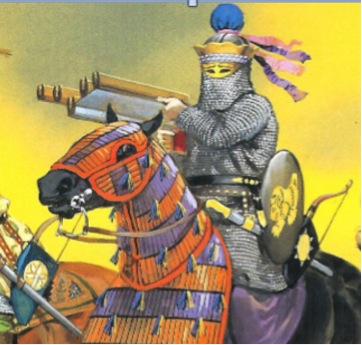The article further below “The Panjagan” is by Masis Reuben Panos. Kindly note that a number of images and captions printed below do not appear in Panos’ original article. The article has also been significantly edited from its original version.
Before reading the article, readers are advised that there is an entire chapter dedicated to the discussion of Sassanian archery, including a detailed discussion of various forms of propelled hand-held ballistae and archery-related equipment in Kaveh Farrokh’s upcoming textbook on the Sassanian army (to be released in mid-Nov. 2017). Kaveh Farrokh provided a presentation at the 10th annual ASMEA (Association for the Study of the Middle East and Africa) conference (October 19-21, 2017) in Washington, D.C., in panel 21 [“Strategies and Armies of Sasanian Persia and Rome“] entitled:
A Synopsis of Sassanian Military Organization and Combat Units
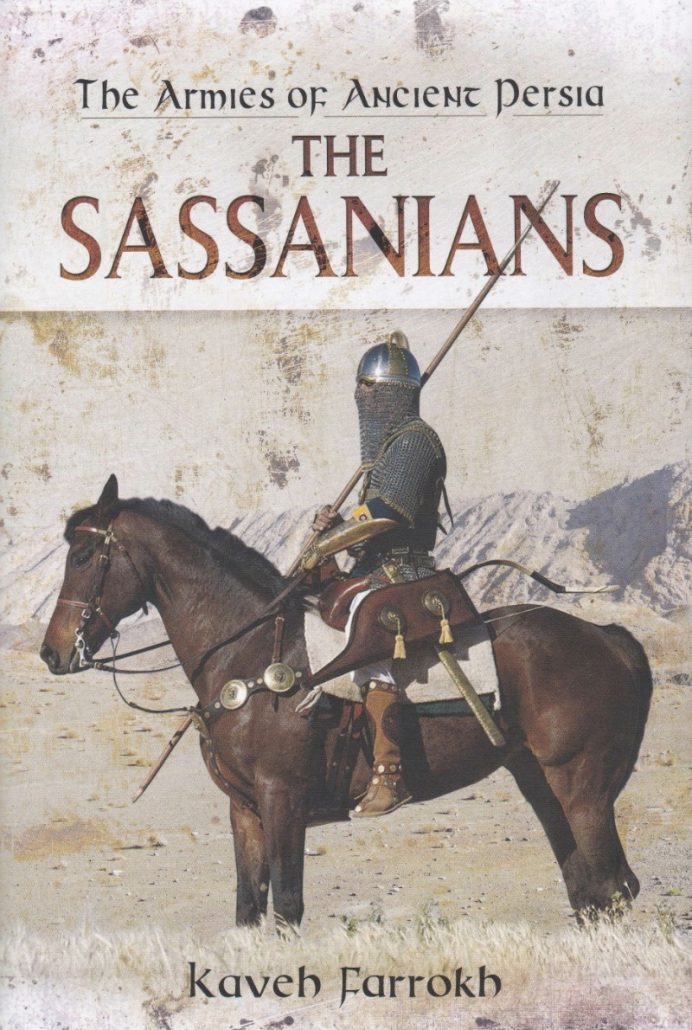
The Armies of Ancient Persia: The Sassanians (2017; Pen & Sword Publications)
The presentation at ASMEA discussed the following topics with respect to the Sassanian army (Spah) of 224-651 CE:
- Organization, Titles, Numerical Factors, and Military Reforms
- The Savaran or Aswaran (elite Sassanian cavalry forces) as well as select prestige units (e.g. Jyanavspar, Pustighban, Javidan, etc.)
- Sassanian infantry or Paighan
- Sassanian military equipment (helmets, swords, archery equipment, etc.)
- Elephant corps
- Auxiliary units (e.g slingers, javeliners, light cavalry, etc.)
The Library of Social Science (LSS) Book Exhibits was also present during the ASMEA Conference in order to present the latest academic textbooks for the purpose of promoting these to academic researchers and experts as well as for university coursework, diplomatic delegations, etc.
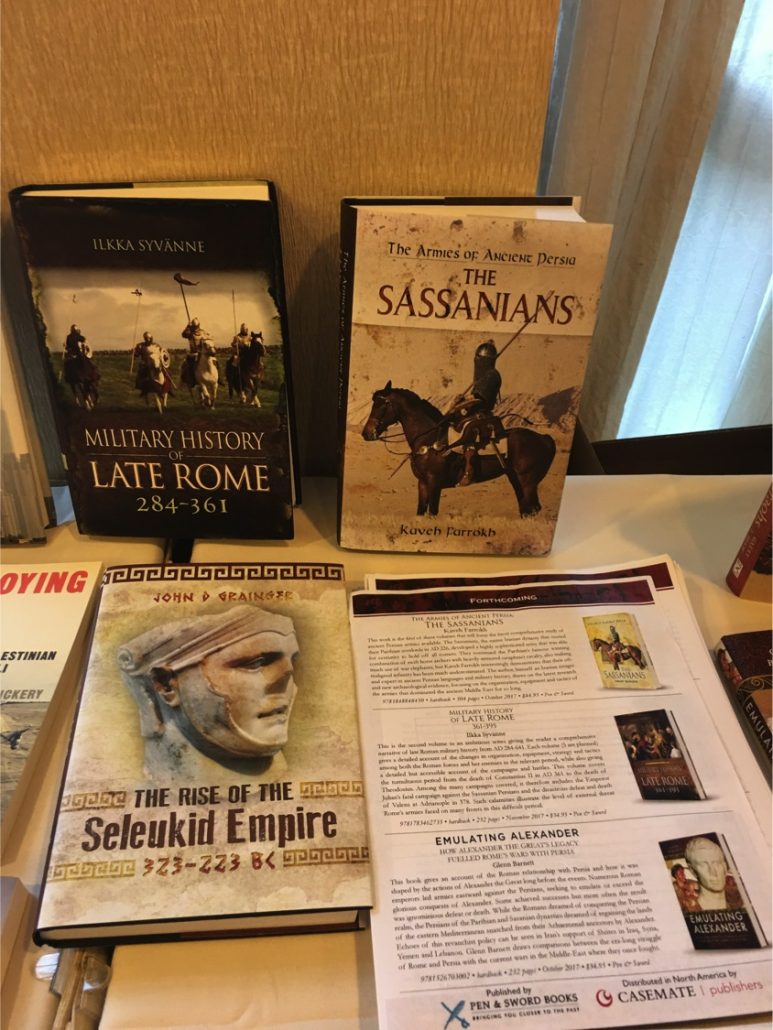
Upcoming textbook on the Sassanian Army on display (upright at right) by the LSS at the ASMEA Conference on October 19-21, 2017. To the right of the Sassanians text is Dr. Ilkka Syanne’s new textbook, Military History of Late Rome (284-361). Dr. Syvanne was the discussant in ASMEA’s panel 21 [“Strategies and Armies of Sasanian Persia and Rome”] who also presented the topic “Nation and Empire Building the Iranian Way: The Case of the Sasanian Empire in the Third Century“. Another critical presentation was made by Dr. Conor Whately (Department of Classics, University of Winnipeg, Canada) entitled “Procopius, Soldiers, and Strategy on the Southeastern Frontier in the Age of Justinian“.
==================================================================================
The Panjagan (Panj [Middle Persian] = Five) is generally described as a weapon capable of firing five arrows simultaneously.
This was used to devastating effect by the Spah (Sasanian army) against the Gok (Celestial/Blue) Turks and their Hephthalite vassals in 619 CE. Thinking how a regular bow could fire 5 arrows simultaneously to any effect is baffling. The technology of this weapon is fully discussed in Kaveh Farrokh’s text on the Sassanian Army, but to summarize, current scholars on the topic believe that this was some type of “multiple crossbow” or arbalist type weapon.
Centuries earlier a repeating crossbow had already been invented in China around the year 200 CE. The inventor of this weapon was Zhuge Liang (181-234), a chancellor of the Shu Han dynasty. The Chinese had already built earlier versions of this weapon, however it was Zhuge who improved the weapon’s design and (rapid) rate of fire.
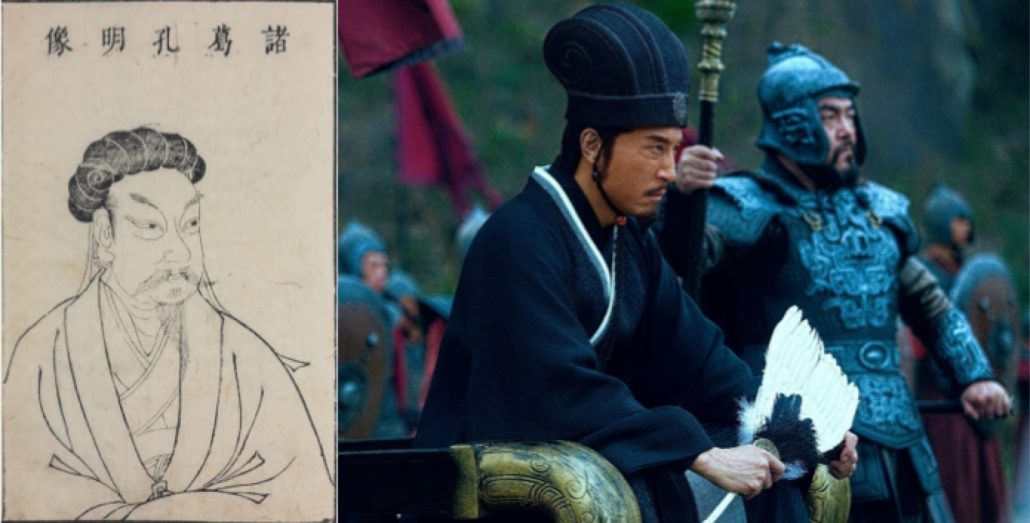
[Left] Portrait of Zhuge Liang in the Sancai Tuhui (a Ming imprint of 1609) (Source: Public Domain); [Right] Chinese movie portrayal of Zhuge Liang (Source: Cfensi), a Chinese chancellor who was also a master military strategist. Liang’s design of the repeating cross-bow may have been bought by Chinese immigrants into Sassanian Persia.
So what about the Panjagan of the Sassanians? This may have been derived from the weapon Zhuge had originally designed. But how did Chinese end up in Persia? In 263 CE The Shu Han lost to the Wei dynasty and many citizens of all classes fled the capital city Chengdu and other regions towards the west, along the old Silk Route, to reach Sassanian Persia.

The Chinese repeating cross-bow (Source: Understanding Our Past). Chinese migrants may have bought prototypes and/or designs of this type of weapon with them to Sassanian Persia.
The Chinese arrivals were welcomed by the Sassanians, who themselves were a new dynasty, having overthrown the previous Parthian dynasty just 39 years before. The Sassanians, locked in war with the powerful Roman Empire, found the new immigrants from the sophisticated civilization of China of great value: they were highly educated, and especially knowledgeable in the latest military technologies.
The Sassanians however were not just facing the Romans (later Romano-Byzantines) on their western frontiers. To the northeast they faced the dangerous warriors of Central Asia. The Hephthalites had already become a menace by the early 480s CE, to be eventually superseded and dominated by the Gok (Celestial/Blue) Turks in the 6th century CE.
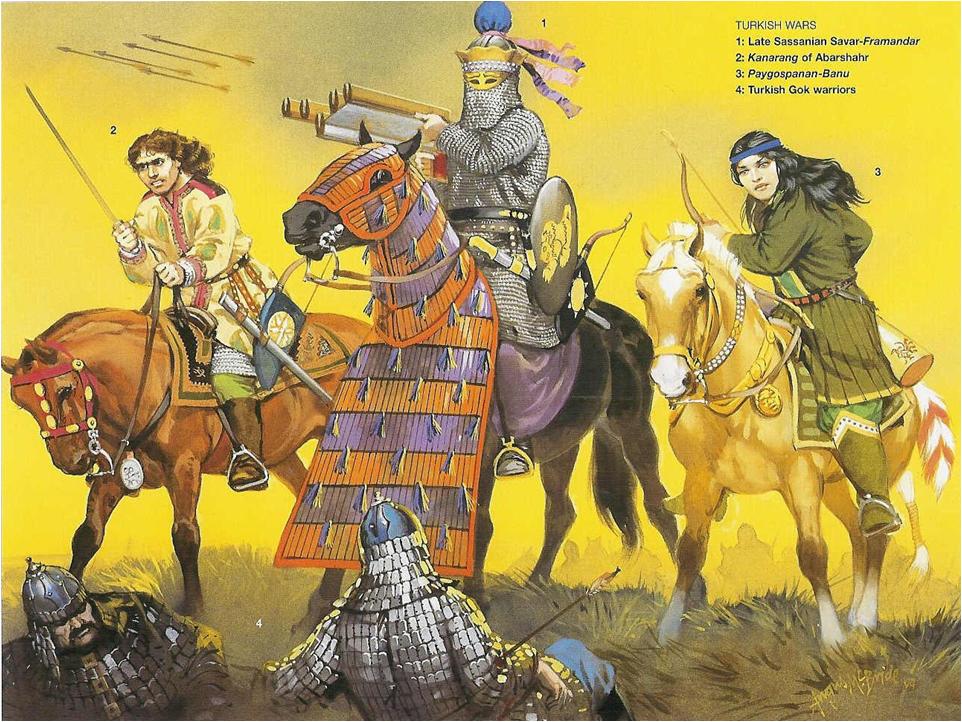
The Savaran counterattack against the Turco-Hephthalite invasion of 618-619 CE (Source: Farrokh, Plate C -اسواران ساسانی- Elite Sassanian cavalry, 2005); note that the fully armored knight in the middle is deploying a Panjagan (conjectural reconstruction) seen firing five arrows.
The Panjagan, and no doubt the well drilled Savaran cavalry of the Sassanian army (Spah), kept the Turkic invaders at bay until the fall of the Sasanian Empire in 651 CE.

